Salamanca, Friday, July 6, 2007
A “Maimon” Day
Even with a head start from the previous evening, the drive up the A66 and the N630 from Seville to Salamanca was long. Along the way we saw one of the strangest truckloads of objects of our travels. It took a few trucks passing with the same kind of material until we realized what it was. A number of the oak trees on the hillsides we passed had strangely orange-colored trunks, so different from the dark brownish grey of most of the trees. Those trees had been stripped of their bark and it was that material, cork, which we saw on the trucks.
A few kilometers before we approached Mérida we passed a rio or a town with the word “Maimon” associated with it. This did not appear on our Michelin map. We also knew we had a long drive ahead so we did not make the detour. Various searches on Google have not led us to any further information, but we remain curious. The Baby Names World site suggests that the word “Maimon” is originally Arabic meaning “Good fortune; luck.” A story in the New York Times of September 3, 2007 suggests that luck and good fortune and the bringing together of Jews and Muslims may well be associated with the name in the near future. What any of those meanings have to do with a place name is not clear.
We arrived at Cáceres in time for lunch. We stopped only long enough to replenish our supplies. The town did at one time have a Judería, and, while there is a Jewish family that carries the name of the town, the Jewish nature of the old Judería is long gone.
We left the ranch lands of nearly desolate plains and rolling hills of Extremadura, and entered beautiful mountain country area used for skiing during the winter months.
Descending into the valley of the Rio Tormes, we entered the region of Castilla and León and approached Salamanca.
Frog City
For some reason we have not been able to discern, frogs are closely associated with Salamanca. A local tradition suggests that if you can find the frog that stonemasons cut into the facade of the university buiding, you’ll likely marry within a year. Since we’ve been married for quite some time, we did not search for that bit of silly stonecutting, but… because Alba in Valencia encouraged us to look for newer stone-cut treats on the frame of the doors to the cathedral where we took our portrait that day,
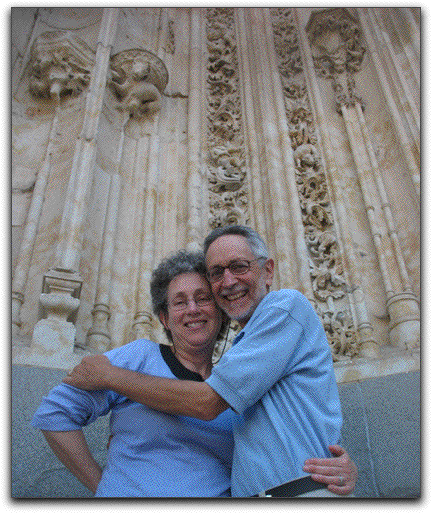
an astronaut, and a griffin eating an ice-cream cone:
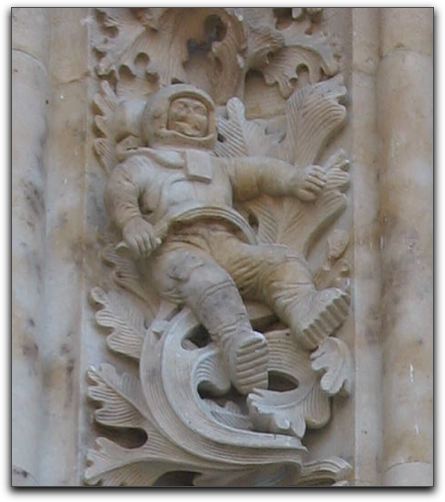

We were told that because Salamanca is a university town, it has a playful spirit. Frogs appear all over, from logos on hats and T shirts, to stuffed animals and even tiny plastic toys. The city’s religous tenor is so different from Seville, from which we had just come, that we were startled to see the “same” Penitentes, but this time as toys to play with rather than the more serious and somber versions we had seen earlier. Compare the cartoonish poses and eyes in the little Penitentes from Salamanca with those from Seville:
Salamanca |
|
Seville |

|
|

|
Simply the Sound of the City’s Name
Salamanca
Our original plan had been to go from Seville to Portugal and then north possibly as far as Santiago de Compostela. Our return to Spain and Madrid would have brought us back by way of long drives through Salamanca. By itself, we did not have a special reason to visit the city… other than the sound of its name. Nonetheless, we were in for a very pleasant treat. Salamanca is now a rather small city. Its university, once one of the world’s centers of learning is now hardly known. According to Michener, the academic year of 1567-68 saw 7,800 students enrolled there studying everything from math to medicine, with an additional 5,000 who could be found “hanging around the city to audit lectures!” What brought about the change? In the words of James Michener:
Each component at Salamanca is perfect, as if time had frozen the old patterns.
As a matter of fact, that is precisely what happened. Under pressures [from the Inquisition; a mass migration of Salamanca’s Jews to Portugal occurred in 1474] this grand university, light of Europe, began to grope and fumble. First, any student suspected of Jewish blood was excluded. Then it became difficult for bright boys from untitled family to gain entrance; vacancies were reserved for the nobility, who used the university as a kind of gentlemen’s finishing school. At the end of the sixteenth century [one hundred years after the Expulsion] Salamanca no longer taught mathematics in any form and fifty years later enrolled not a single student in medicine. The fine interchange of ideas that used to be carried on with Oxford and Bologna was halted, and the sharp debate that once characterized the intellectual life of the university was silenced. Registrations dropped from seven thousand eight hundred to to a mere three hundred in 1824.
I know of no other educational institution in the world that started so high as Salamanca to fall so low.
There may be hope for the future. The city is lovely. Its old town is built of an amber-colored stone quarried at a town not far away. A special font or script provides the signage on the buildings. This is now, sadly, often covered by other more modern commercial signage.
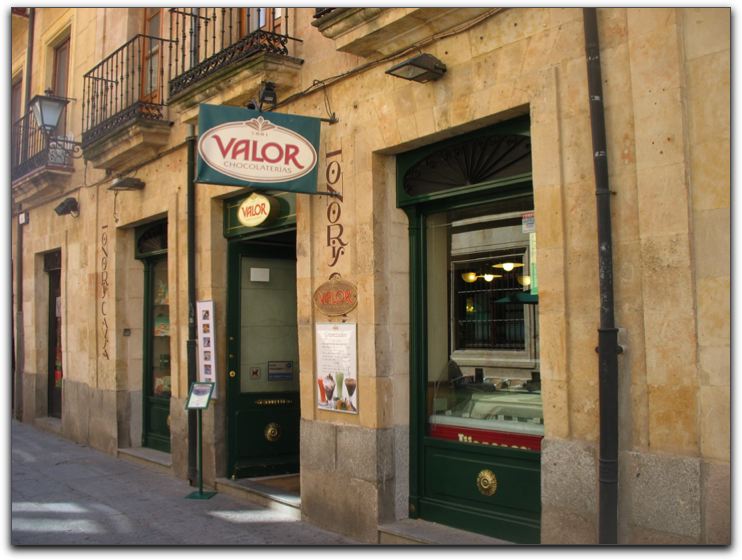
And, while not over-run by tourists, there are a growing number of exchange students who we saw studying Spanish in immersion classes for the summer. Some were in the Valor chocolate shop comparing notes as we had our chocolate (in a mancerina).
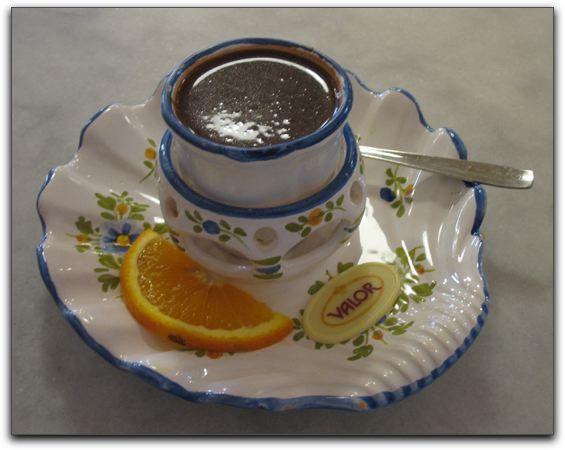
Still Searching for Samuel Levinger
Alba in Valencia had told us about a group in Salamanca.
Archivo General de la Guerra Civil Española,
c/Gibraltar 2, 37088 Salamanca,
tel 923-21-28-45, fax 923-26-47-30.
Información sobre los soldados judíos en las Brigadas Internacionales.
We called them and left our email addresses, but have never heard back.
More “Maimon”
As the city awoke from its siesta the lovely Plaza Major, known to be the most beautiful in all of
Spain, filled up with groups of musicians, some dressed in medieval costumes and using medieval instruments, at different locations. We walked along the arcade looking at all the various shops. One in particular caught our attention. A sweet shop with a “Bollo Maimon” in the window.

We purchased one. We enjoyed a Moroccan meal at one of the smaller restaurants just off the plaza and made our way further north to our campsite.
There we made Shabbat in the van and…
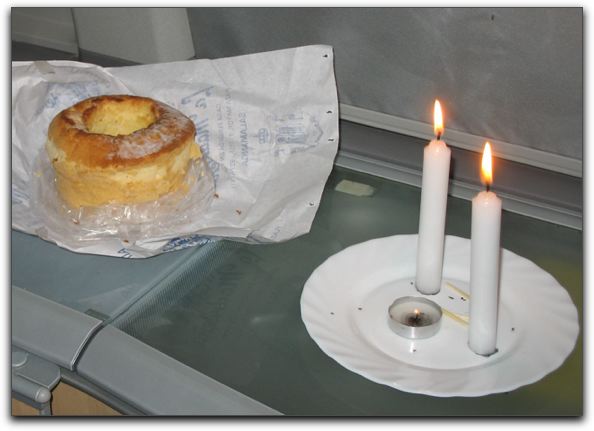
…were disappointed by the dry, hard angelfood cake like nature of our Maimon cake.
start || back || next










